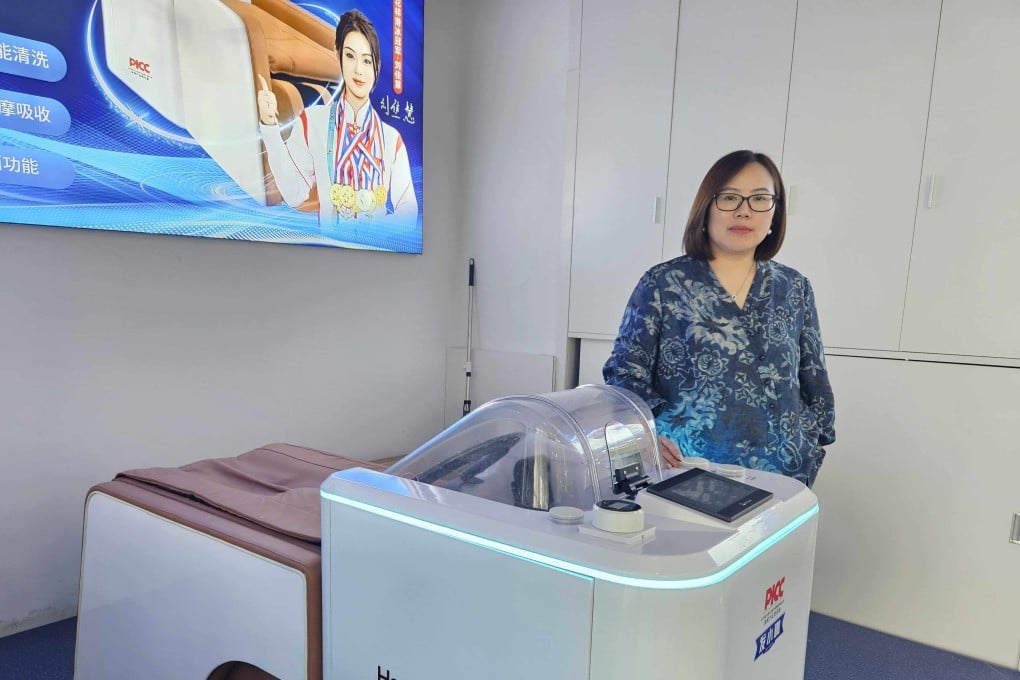SALLEY — Adult giraffes usually look at the world from about 15-18 feet above ground level, so face-to-face experiences have been elusive for most of Eudora Wildlife Safari Park 's visitors over the years, but this year has brought a popular change. An observation deck is now part of the landscape, giving visitors the chance for a second-story perspective for meeting two of South Carolina's tallest critters: resident giraffes Elliott, 8, and Amari, 6. Elliott and Amari normally stroll around their yard during daylight hours, which means that some visitors may get immediate, close contact, while others may wind up waiting a while for a closer look.
Construction on the project began in 2024, and plans are for the addition of more touches, including landscaping and a lift to help improve access for the handicapped, said Mark Nisbet, Eudora's founder . Visitors who opt for the park's drive-through option may notice the two giraffes during the final few yards of their treks, which normally include the chance to see — and often feed — zebras, bison, camels, llamas, emus, ostriches, alpacas, yaks and miniature donkeys, among other furry or feathery neighbors . The new deck, designed with help from Aiken architect McDonald Law , is named Melman's Landing, in memory of Eudora's original giraffe, and features tons of eucalyptus in the railing, in keeping with an African theme used by a variety of zoos.

Hay makes up most of the daily diet for Amari and Elliott, with an occasional bonus such as kale and carrots, and some Eudora visitors opt to add more variety to the menu by buying a bowl of bite-sized cubes promoted as helping ensure a "nutritionally balanced, starch- and phosphorus-controlled diet designed for exotic herbivores managed under human care." "Everything is in there that they might need," Nisbet said. "It's more of a treat.
It's not a main part of the food, because they're all herbivores and...
grazers. Eating hay is their main source of food." An "ick" factor comes into play for some visitors, as giraffes have long, prehensile tongues -- in various shades of pink, black, purple and dark blue — that they can extend to receive food and occasionally lick a provider in the process.
Thick, sticky saliva is part of the package. Nisbet's plans for additions include displays of information relating to conservation, along with the chance for visitors to invest easily through purchases of giraffe food, T-shirts and the like, with half of the proceeds being directed to conservation. Nisbet noted that his giraffes' species — the reticulated giraffe — has its roots in South Africa and Kenya, and that Amari and Elliott have distinct backgrounds.
Elliott was a first-born, and his mother "had some complications and was unable to raise him, so when we got him, we had to bottle-raise him, so he's very human-engaging and loves that," Nisbet said. Amari was raised by his mother. "He'd been out in a big, privately owned facility, and he had interaction with other giraffes but not with a lot of other things, so since he's been here, he's really developed.
".
Technology

Wagener Monthly: Salley park provides visitors, giraffes a chance for face-to-face contact
SALLEY — Adult giraffes usually look at the world from about 15-18 feet above ground level, so face-to-face experiences have been elusive for most of Eudora Wildlife Safari Park's visitors over the years, but this year has brought a popular...















